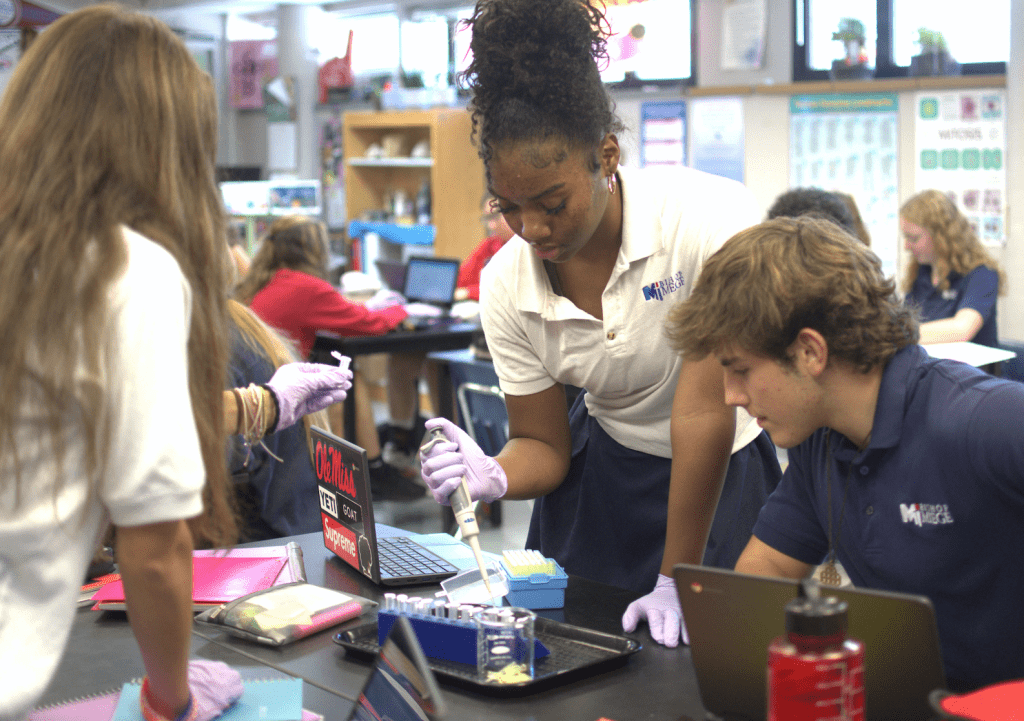
by Jill Ragar Esfeld
jill.esfeld@theleaven.org
ROELAND PARK — There is a murder to be solved at Bishop Miege High School here. And it’s up to Mary Beth Summers’ biomedical science students to determine the culprit.
“We have someone who’s died,” explained Summers. “And then we have some unknown samples from the crime scene.”
On the day of The Leaven’s visit, students were analyzing which samples are blood and what blood types are present.
That should help them narrow down their list of suspects.

“And then,” said Summers, “they’re developing an experiment to try to test blood splatter.”
That will determine the cause of death.
Not to worry, this murder is simulated; but the lessons learned are not.
As these young sleuths engage in the science behind crime-scene investigation, they will discover far more than the culprit in this whodunit.
They’ll find out if they have an interest in forensic science, phlebotomy or any number of professions in the biomedical science field.
On the way to that important discovery, they’re having some fun.
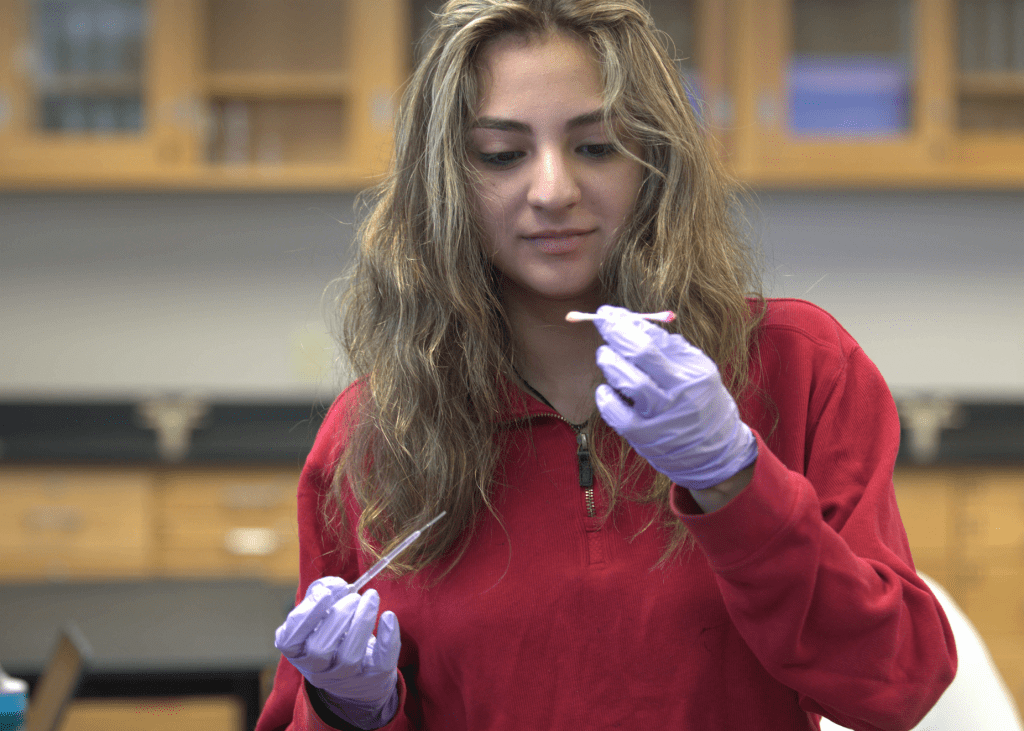
This class is a hands-on teenage dream of blood sampling, fingerprinting and learning how maggots and flies can help determine time of death.
Welcome to the newest path in the Bishop Miege Project Lead the Way (PLTW) program — biomedical science joins the already successful paths of computer science and engineering.
Forensic science techniques is the first unit on this path.
The second is clinical care in which students will learn more about the professions of physicians and nurses.
The third unit is called “outbreak.”
“It has to do with a bacterial outbreak that occurs in the hospital,” explained Summers. “Students have to figure out how patients are being moved through the hospital and where a patient might have been exposed.
“So, they’re going to see a little more of the research side.”
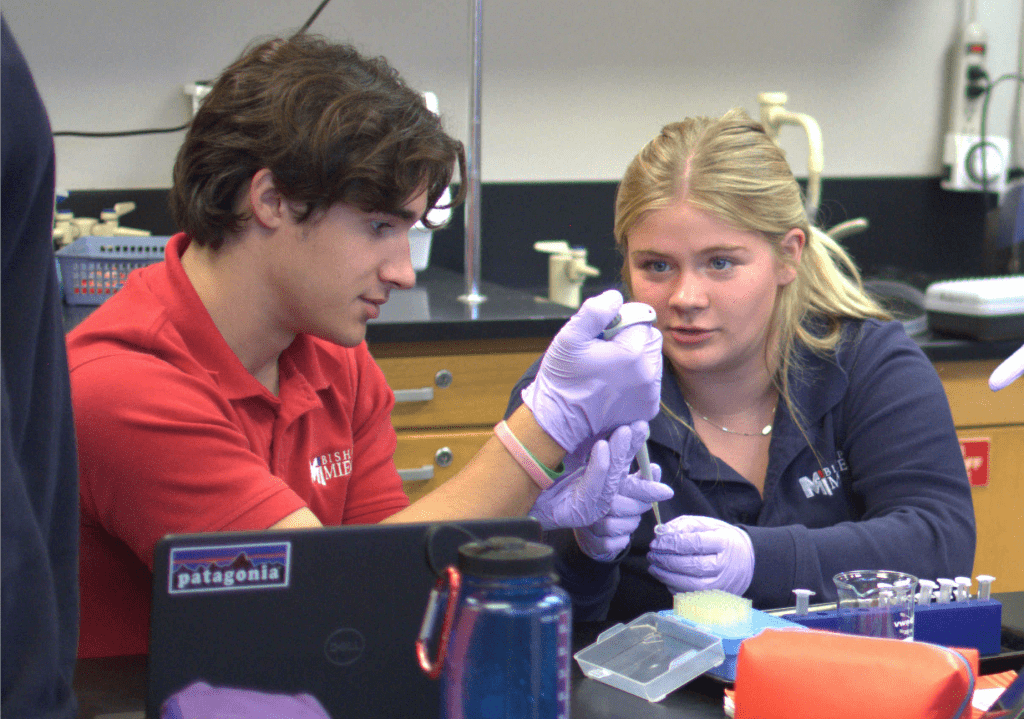
Next year, a course in human body systems will be added.
Bishop Miege is seeing a surge in student interest and involvement with these experiential lessons in science.
“We love Project Lead the Way because it’s so hands-on,” said principal Maureen Engen.
This new path was added based on student interest.
“We did a survey,” said Engen. “Thirty percent of the students that completed it were interested in health science and medicine.”
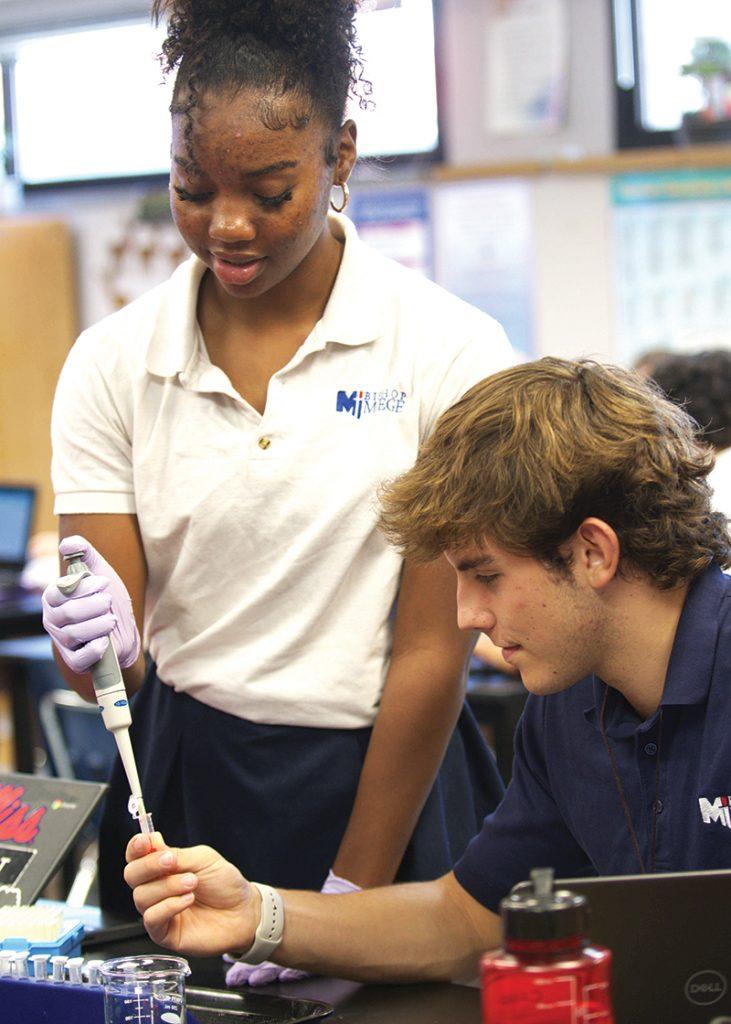
PLTW courses provide a rigorous, project-based curriculum aimed at building problem-solving, teamwork, communication and leadership skills.
“It’s important that we’re preparing students to enter these fields,” said Matt Peterie, director of 21st Century Learning. “And we want them to have that foundation in Catholic education with stewardship at the center of it.
“At the core, that’s what gave us the motivation to build out these pathways.”
Any time a teacher wants to teach a PLTW class, they have to go through an intense two-week summer training program.
“When I did my training this summer,” said Summers, “we talked about the ethics piece.
“I was glad I could do a little extra research [into] what the Catholic view is, to speak to that as well,” she added.
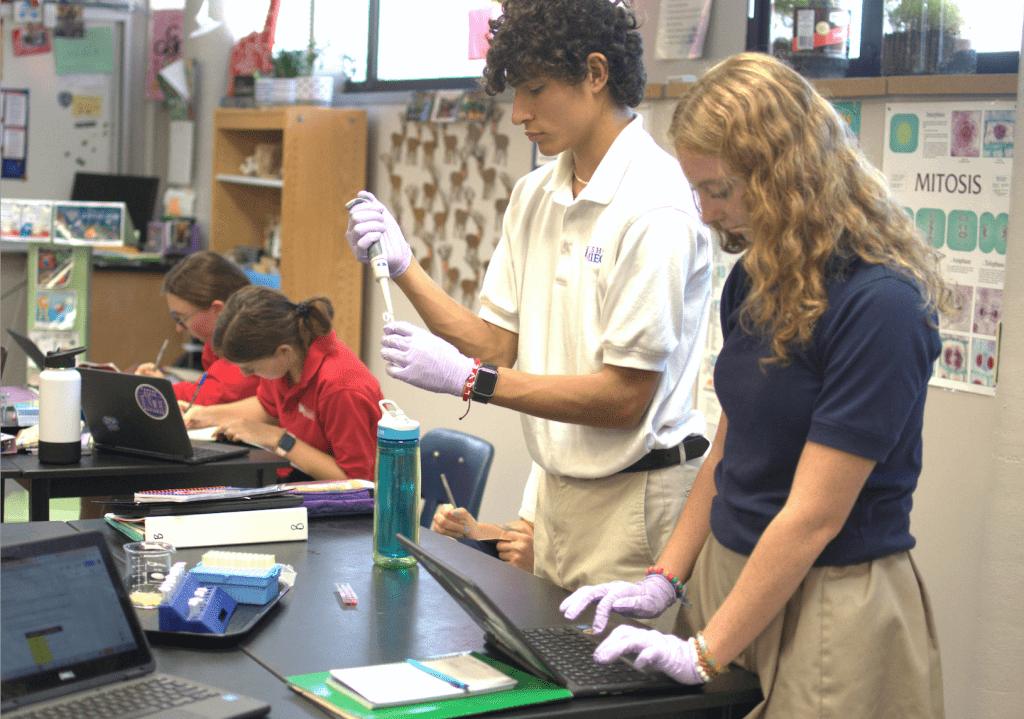
With Summers’ help, Bishop Miege now has a HOSA (Heathcare Occupations Students of America) club.
“It’s a nationally recognized club,” she said. “I try to get professionals from the fields of health care brought in to Miege so my students can hear from different health care professionals.
“A lot of the speakers are former graduates who are still practicing their faith,” she continued.
As students discern their interests, they also have the opportunity to join one of seven academic communities at Bishop Miege. The communities span every career interest, including one in health sciences and medicine.
“The big picture with [these communities],” said Peterie, is they “help students connect their interests, strengths and passions to what they may be doing after their time here at Bishop Miege.
“It’s not locking them into a career; it’s helping them find their path.”
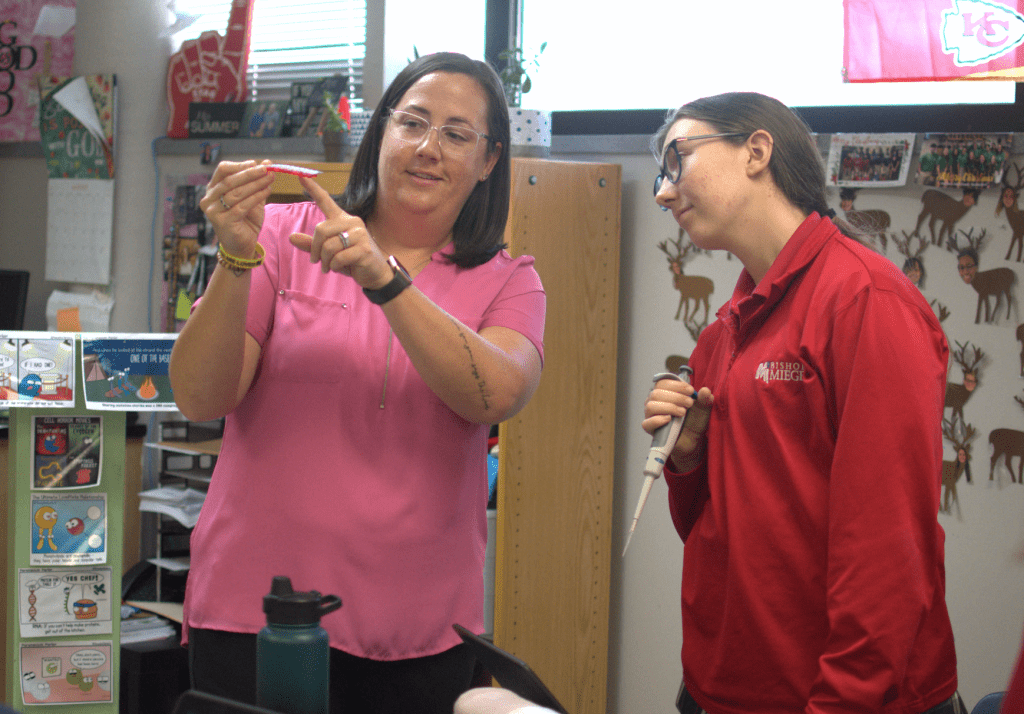
Students interested in biomedical science now have a clear path at Bishop Miege that will help them discern the best way to utilize their God-given gifts in that field.
“We want to provide a high-profile space for teachers to deliver project-based learning experiences,” said Engen, “because it helps students develop and practice essential skills.
“It also lends itself to helping them figure out what they are going to be good at post-high school.”
The future is definitely at the heart of the biomedical science pathway.
“I’m excited we can create that foundation here,” said Peterie. “We can light that fire so students can go out in the world and serve Christ and build up the kingdom by the work they’re going to do.”






